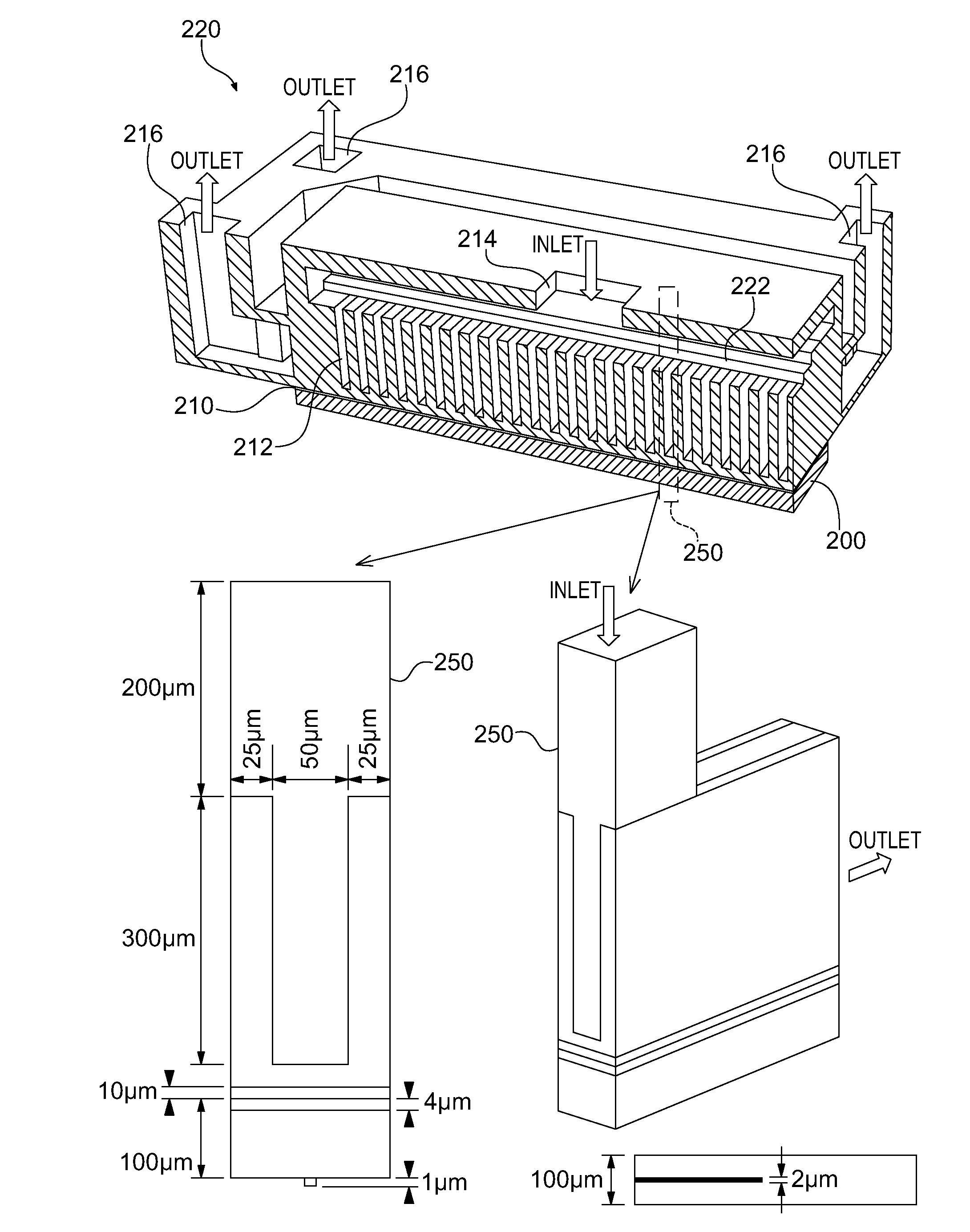Microfluidic channels for thermal management of microelectronics
a microfluidic channel and microelectronic technology, applied in the direction of semiconductor devices, semiconductor/solid-state device details, electrical apparatus, etc., can solve the problems of disrupting the already-established semiconductor fabrication process, and achieve better in-plane tolerances, finer or more complex features, and mechanical or chemical properties. good
- Summary
- Abstract
- Description
- Claims
- Application Information
AI Technical Summary
Benefits of technology
Problems solved by technology
Method used
Image
Examples
Embodiment Construction
[0033]Referring now to the figures, wherein like elements are numbered alike throughout, FIG. 1 shows an exploded view illustrating several concepts of the present invention. A microelectronic device 140 (here assumed to be a GaN HEMT array) is bonded with a stress transition stack (or other thermal interface material) 130 to an integrated thermal spreader 150. Within the integrated thermal spreader 150 are micro-structured thermal spreaders 120 to which fluid is distributed and optionally retrieved using a fluidic manifold 110 here shown as a fluidic distribution network.
[0034]FIG. 2A illustrates an exploded view in cross section of FIG. 2B, which may be viewed as including three constitutive parts: i) a microelectronics device 200, which may be an integrated circuit such as a GaN HEMT RF amplifier; ii) a microfabricated thermal spreader 220 with integrated fluidic heat exchanger and flow regions; and iii) a stress transition stack or thermal interface material 210 used to bond the...
PUM
 Login to View More
Login to View More Abstract
Description
Claims
Application Information
 Login to View More
Login to View More - R&D
- Intellectual Property
- Life Sciences
- Materials
- Tech Scout
- Unparalleled Data Quality
- Higher Quality Content
- 60% Fewer Hallucinations
Browse by: Latest US Patents, China's latest patents, Technical Efficacy Thesaurus, Application Domain, Technology Topic, Popular Technical Reports.
© 2025 PatSnap. All rights reserved.Legal|Privacy policy|Modern Slavery Act Transparency Statement|Sitemap|About US| Contact US: help@patsnap.com



